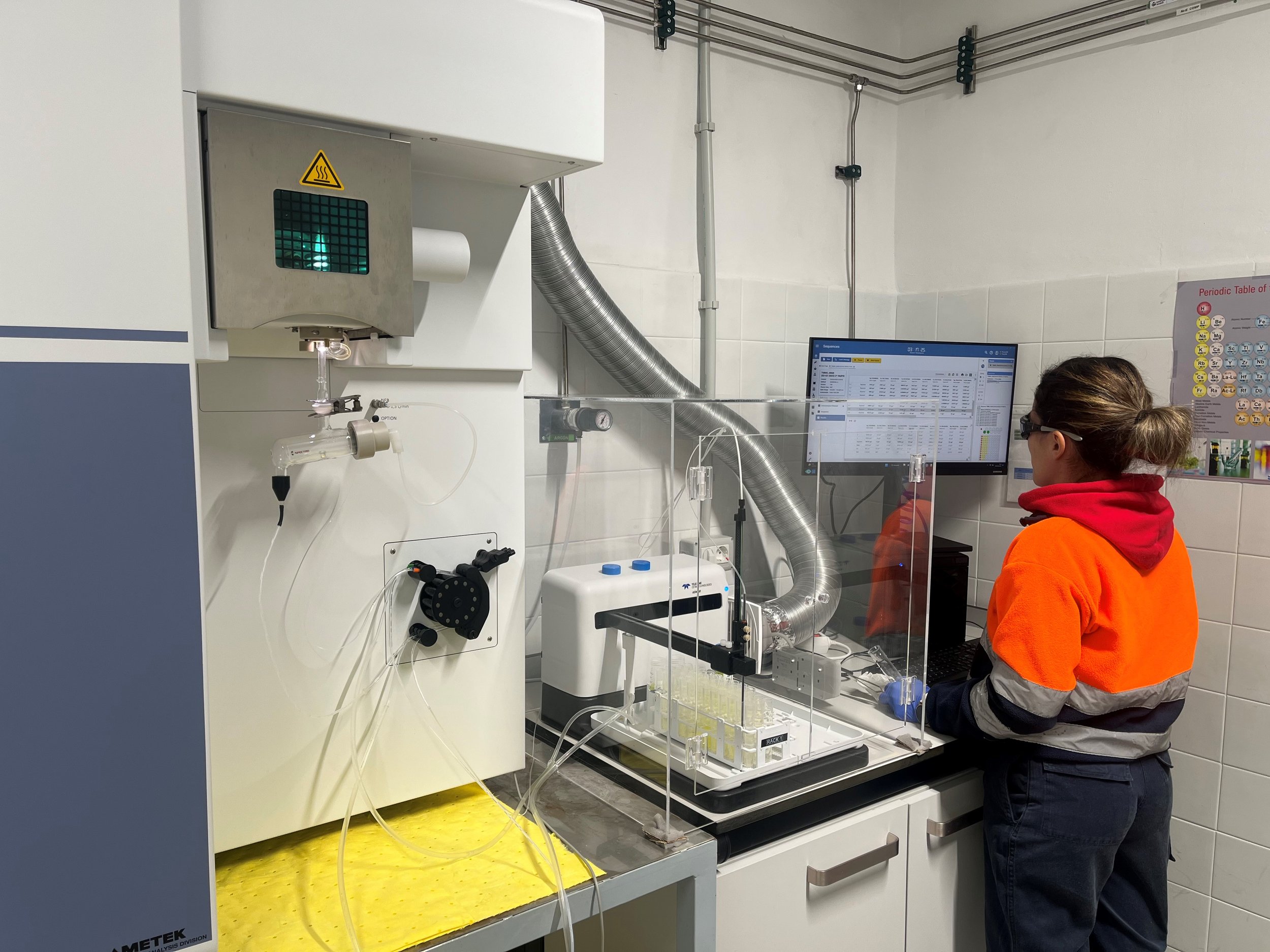Exploring the mines operations and pilots of Tharsis Mining
by Elena Torelló Fernández (Tharsis Mining)
The MASTERMINE consortium convened for the kick-off meeting on January 25-26th in Seville, organized by Tharsis Mining. On the second day of the meeting all partners had the opportunity to visit Tharsis mines and premises in Huelva to learn more about their operation and their role in MASTERMINE project.
The first stop on the visit was La Zarza mine in Huelva where we observed the drilling activities and visited the La Zarza pit. The second stop was Tharsis main offices and laboratory buildings in Alosno, Huelva. The Tharsis Mining laboratories employ various assay techniques to analyse core drill samples from the drilling activities and conduct metallurgical testwork for the recovery of metals in different mineral resources.
The third stop on the visit was Filon Norte and Sierra Bullones pits, both of which are part of Tharsis Mining. These mines were primarily in operation until the last decade of the 20th century to extract crude pyrite for the production of sulfuric acid. Currently, the mining activity is suspended, and both the deposits and the mine waste dumps are being searched for the presence of Zn, Cu, Pb, Au, Ag, or Co.
During the MASTERMINE project, four different pilots will be carried out in some of the mines belonging to Tharsis Mining. The details of these pilots were explained in detail during the visit.
1. Slope monitoring and ground movement
In Filon Norte open pit, east slope movements are monitored every 6 months with regular topography while in La Zarza open pit the ground movements in Los Cepos Embankment are monitored every 3 months. However, ground movements in both mines are not continuously monitored, and no predictions can be made. Therefore, a decision support system is needed to assess slope and ground stability based on continuous measurements. Surface sensors will have to be installed to develop a slope behaviour model.
2. Hydrological balance
The water level in La Zarza open pit is monitored every month with regular topography, and only the water flow from Los Cepos Adit is continuously monitored. However, the whole system is not under surveillance, and no predictions can be made. This open pit is flooded and is linked to two old galleries that need to be modelled and included in the software to predict the behaviour of the system based on continuous measurements of defined inputs such as rainfall events, water level, water pressure, embankment movement, and water flow.
3. Predictive maintenance
We are going to implement a pilot using predictive maintenance. The idea is to perform a test in assimilable equipment to simulate the main equipment of the future water treatment plant at Filon Norte pit and evacuate the water from this mine to restart the mining operation.
The pilot project will focus on the main equipment of this water treatment plant, which will produce water suitable for discharging into the public domain and sludge concentrated in metals. During the MASTERMINE project, a water treatment pilot plant is expected to be installed to achieve the objectives. AI algorithms will be trained to monitor the future state of the equipment so that appropriate actions can be taken in case of critical conditions.
4. Raw material recovery
This involves processing the sludge from the projected water treatment plant in Filon Norte pit to recover metals of interest. Different separation technologies and process chains will be tested and evaluated in the lab. Our laboratory will produce the sludge containing metals, which will then be tested in metal recovery processes.








